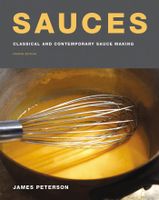Label
All
0
Clear all filters
🍝 Enjoy the cooking of Italy and save 25% on ckbk Membership 🇮🇹
Duck
Appears in
Published 1991
Ducks available in the United States—the widely sold Pekin duck (not to be confused with Peking duck) and the moulard duck, used to produce foie gras—are covered with a thick layer of fat that has to be rendered in some way before the duck is served. Such ducks cannot be roasted in the same way as a chicken because in order to get the fat to render, the duck has to be overcooked, resulting in a “crispy” duck that’s more like confit or braised duck than it is typical of a roast. Duck must be sectioned and the breasts cooked differently than the thighs. Usually, the breasts are sautéed over low to medium heat, skin side down for the most part, to render the fat without overcooking the meat, and served rare to medium rare. The thighs are best braised or slow roasted. Slow roasting is really a kind of braising in which the only liquid is the liquid naturally released by the meat.
Become a Premium Member to access this page
Unlimited, ad-free access to hundreds of the world’s best cookbooks
Over 150,000 recipes with thousands more added every month
Recommended by leading chefs and food writers
Powerful search filters to match your tastes
Create collections and add reviews or private notes to any recipe
Swipe to browse each cookbook from cover-to-cover
Manage your subscription via the My Membership page
Best value
Part of
Advertisement
Related Recipes
-
-
-
-
Related Reference
-
-
-
-
Advertisement
The licensor does not allow printing of this title



